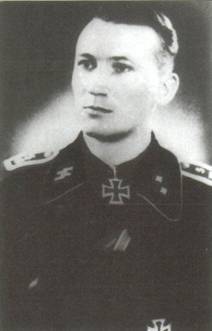Bauer, Helmut (SS-Pz-Reg.5 "Wiking")
- Date of birth:
- February 2nd, 1920 (Mittelschefflenz/Baden-Württemberg, Germany)
- Date of death:
- November 30th, 1967 (Wertheim am Main/Baden-Württemberg, Germany)
- Service number:
- SS-Nr.: 468.175 // NSDAP-Nr.:
- Nationality:
- German
Biography
In service from November 1st 1938.
Promotions:
1938: SS-Mann
01.06.1943: SS-Oberscharführer
1943: SS-Untersturmführer
1944: SS-Obersturmführer
Career:
01.11.1938: entered 17./ SS-Regiment "Deutschland" in Ellwangen
01.09.1939-10.05.1940: Kradschützen-Kompanie der SS-Aufklärungsabteilung zbV - Campaign in Poland and France
1940-1941: Aufklärungs-Abteilung "Germania" then Aufklärungs-Abteilung "Wiking"
Summer 1942: Zugführer - Aufklärungszug - 3./ SS-Panzer-Abteilung 5 equipped with Panzer II
02.1943: Zugführer - 3./ SS-Panzer-Regiment 5, equipped with Panzer IV
Beginning 1944: severely WIA
Summer 1944: Abteilungsadjutant and later Kompanieführer - SS-Panzerregiment 5 "Wiking"
1945: Führer der Panzergruppe 'Bauer' - 5. SS-Panzer-Division "Wiking"
Do you have more information about this person? Inform us!
- Period:
- Second World War (1939-1945)
- Awarded on:
- July 27th, 1941
- Period:
- Second World War (1939-1945)
- Awarded on:
- March 7th, 1943
- Period:
- Second World War (1939-1945)
- Rank:
- SS-Oberscharführer (Staff Sergeant)
- Unit:
- Zugführer, 3. Kompanie, II. Abteilung, SS-Panzer-Regiment 5 "Wiking", 5. SS-Panzer-Division "Wiking", Waffen-SS
- Awarded on:
- September 12th, 1943
Submitted on September 13th 1943.
Preliminary document dated on September 21st 1943.
- Period:
- Second World War (1939-1945)
- Period:
- Second World War (1939-1945)
- Period:
- Second World War (1939-1945)
- Awarded on:
- 1942
Sources
- Photo: Helmut Bauer - Vojsko.net
- - FEDERL, CH., Die Ritterkreuzträger der Deutschen Panzerdivisionen 1939-1945, VDM Heinz Nickel, Zweibrücken, 2000.
- FELLGIEBEL, W.P., Elite of theThird Reich, Helion & Company Limited, Solihull, 2003.
- WEGMANN, GüNTER, Die Ritterkreuzträger der Deutschen Wehrmacht 1939-1945, Biblio-Verlag, 2004.
- Die Ordensträger der Deutschen Wehrmacht (CD), VMD-Verlag GmbH, Osnabrück, 2002
- Microfilm Publication A3343. US National Archives.








